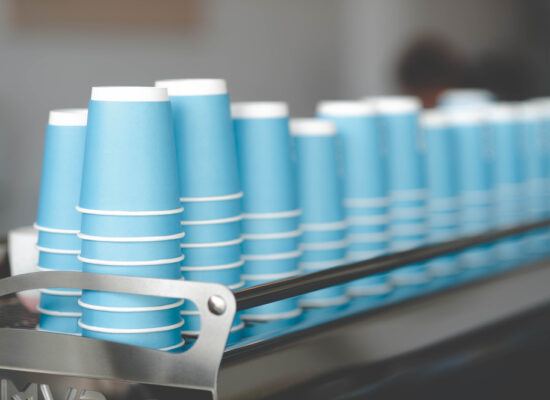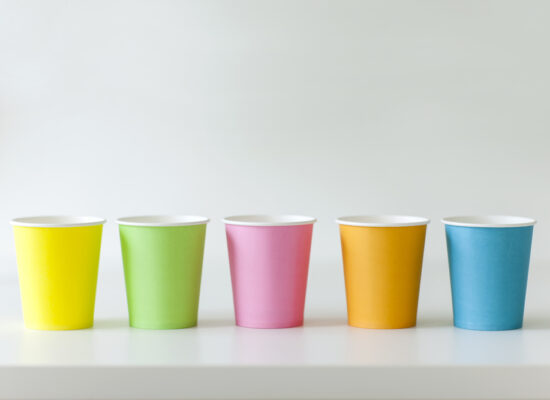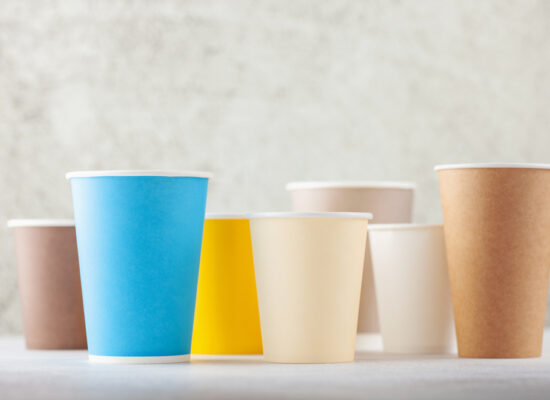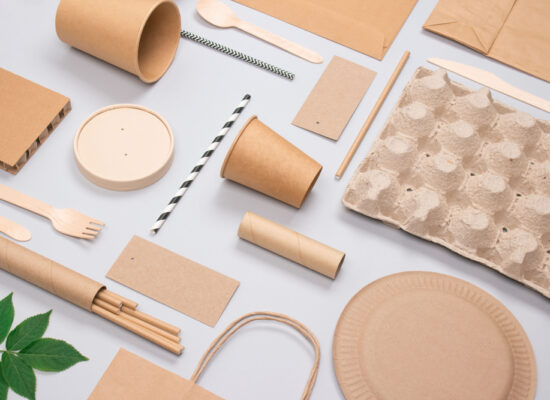Paper Cups
Paper cups: What Makes Them Sustainable?
A paper cup’s convenience, cleanliness, and hygienic qualities are clear. The fact that paper cups are made from a renewable resource is something that most of us don’t immediately realize.
Used paper cups are recycled into a range of items at paper mills. Tissue, recycled paperboard and numerous other types of paper goods are produced using the fiber from recycled cups.
Due of their recycling potential, paper cups are a sustainable option.
Being made from a resource that is renewable and whose production benefits the environment makes them a sustainable option as well. In other words, they are constructed from wood fiber that comes from sustainably managed forests, a resource that is completely renewable.
The use of wood fiber in the production of goods like paper cups benefits the environment.
In the United States, more than 1 billion trees are planted annually. Additionally, working forests are managed responsibly.
Working forests generate oxygen, trap carbon dioxide, and store it. 14% of the total yearly carbon dioxide emissions in the United States are stored each year in forests and the products made from them.
Chips, barks, and sticks left over from manufacturing are utilized to create bioenergy that drives mills.
Paper cups and other wood and paper items are made using approximately two thirds sustainable bioenergy rather than fossil fuels.
Paper goods are a fantastic sustainable option since they assist our recycling system, keep lands forested, store carbon, and are produced using renewable bioenergy.
Enjoy your beverage in a paper cup guilt-free, but don’t forget to discard it later.
How are paper cups produced?
Even though a take-away coffee cup looks simple when it is presented to you at a coffee shop, a lot of thinking and effort goes into keeping that “simple” paper cup safe and environmentally friendly.
Lining and layers of paper cups
Paperboard makes up the wall, or outside, of a paper cup. This layer offers insulation and heat retention capabilities. In actual use, it maintains the beverage’s heat for as long as feasible without becoming uncomfortable to carry around.
A single wall is sufficient for cold beverages. Use double-walled cups for hot beverages to provide additional heat protection. The second sleeve enclosing the cup not only insulates heat but also enables mixing and matching of the embossing pattern and prints to produce a variety of designs.
A thin plastic lining is applied to the paperboard, which is necessary for safety reasons because it serves as a barrier to ensure food hygiene and make the cup liquid-proof. Because of its durability, strength, and superior barrier qualities, plastic is a great lining material. In terms of material, energy, and cost efficiency, it is likewise excellent.
Currently, neither the paperboard nor the liner of a cup can be produced of recycled materials and still be acceptable for contact with food. The plastic lining can be created using renewable plant-based materials rather of fossil fuels to reduce the carbon footprint.
Process of making paper cups
To ensure food safety, paper cups are made from virgin paperboard. Paperboard that we use for paper cups always has a provenance and only comes from legally recognized and responsibly managed forests.
The making procedure:
– Reels are made from the foodservice paperboard. Printing and cutting the spools into precisely sized cup sidewall blanks takes place.
– The blanks are put into machines that manufacture cups, which wrap them into cups and add a bottom.
– In order to make the cups liquid-proof, the seams are heated. The machine then shapes the cups into their finished, rounded shape.
PLASTIC VS. PAPER DISPOSABLE CUPS
Since their creation in the early twentieth century, disposable cups have advanced significantly and are a common item in the twenty-first century. Paper and plastic cups are the two primary components, and these are useful when someone needs to drink on the go without worrying about cleanup.
But since each type of cup has advantages and disadvantages, it can be difficult to determine which is ultimately best for the environment. Though both help save water by eliminating the need to wash reusable cups, there are other aspects of their production that may have an environmental impact.
A SUMMARY OF DISPOSABLE CUPS’ HISTORY
In the preceding century, the paper cup set out on its voyage. Lawrence Luellen created the disposable cup in 1907. However, what action led people to convert from glass or ceramic cups to the incredibly practical paper ones?
Drinking from communal cups at public water fountains or water barrels maintained on trains was a fairly typical habit at the turn of the 20th century. This type of cup sharing was the cause of public health issues, as may be predicted. The first person to address this issue was Boston, Massachusetts attorney Lawrence Luellen.
Up until the 1970s, when they first appeared with their distinctive red color, the paper cup he designed served as the industry standard for disposable cups. These red plastic cups have gained a lot of popularity since then. They are particularly useful at gatherings with plenty of alcohol, it should be noted.
Both types of mugs are widely used today all throughout the world. However, it is debatable which one is best for the environment. We’ll try to sort through the conflicting research on the subject today to determine whether paper or plastic is better for the environment.
IMPACT OF MANUFACTURING ON THE ENVIRONMENT
Significant changes have taken place in the past few decades in the production of paper and plastic, not just for cups but for all things. Since 1960 to 2007, the EPA estimates that the production of paper has increased by approximately 300 percent. Their statistics on plastic production are impressive; within the same period, plastic production increased by more than 7000 percent.
Even though both of these products require a lot of energy to produce, the environmental impact goes beyond that. More than a million tons of paper were used in 2007 to make cups and plates. Nearly all of them were merely discarded and dumped in landfills.
Over 800,000 tons of plastic plates and cups were produced at the same time, the most of which ended up in landfills.
RECYCLING PAPER CUPS
The biodegradability of paper cups is its principal benefit. These cups break down easily and safely, but plastic cups cannot. However, because so many cups are frequently produced, their influence on landfills is a serious issue.
Having said that, it is possible to recycle materials to make both of these cups, which is great for the environment. Compared to alternatives constructed using conventional materials, this is a better choice for Earth’s ecology. By eliminating the need to procure raw materials, these recycled products save a significant amount of energy and material.
Recycling single-use cups can help cut down on the quantity of trash dumped in landfills.
The cost savings associated with paper and plastic cups often outweigh these environmental considerations for the majority of consumers. When purchased in bulk, they are not only very affordable per cup but also quite convenient to use. The popularity of disposable cups is even higher because no one wants to take the chance of damaging mugs or glasses when they are out and about.
LIFECYCLE EVALUATIONS
So long, biodegradability has been the primary distinction between paper cups and plastic cups. But in order to determine which choice is the greenest, we must look at their “life cycle assessments”. Therefore, we must take into account a range of potential ecological effects, such as carbon footprints, ozone depletion, impacts on global warming, hazardous compounds, and resource consumption issues that these cups may bring about.
In this age-old argument, it is frequently forgotten that Styrofoam is also a type of plastic. According to each cup’s life cycle assessment, plastic cups don’t significantly strain the environment more than paper cups do. In contrast, a plastic cup actually has a lower carbon footprint than a paper one and uses less energy during production.
DOES THAT MAKE PLASTIC CUPS THE BETTER OPTION, ACTUALLY? NOT PRECISELY.
As was already noted, Styrofoam degrades much, much more slowly, so there is something else we need to take into account. This highlights the fact that the things that are most important to each of us eventually influence the purchase decisions we make. Even while plastic cups really have a lesser carbon footprint, it is a good idea to avoid them if waste reduction or pollution are your main concerns.
PAPER VS. PLASTIC
Plastic cups used about 17 percent less energy, roughly 42 percent less water, and about 22 percent less petroleum to gather materials and carry cups as compared to paper or metal cups.
So, the decision is ultimately up to you. Though less expensive, plastic cups are only suitable for cold beverages. Paper cups are less environmentally friendly yet don’t cause thermal burns. For optimum efficiency, we advise combining the two.






© Arbemu. All rights reserved